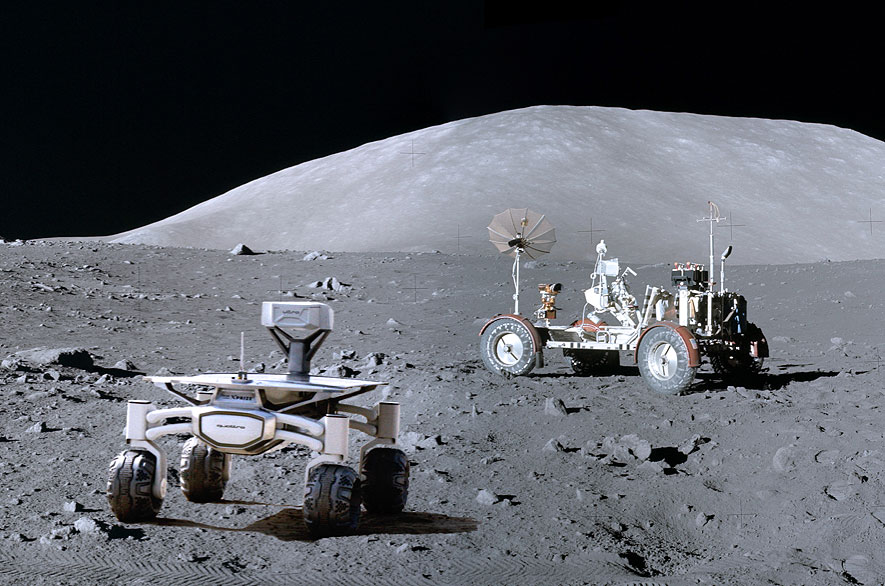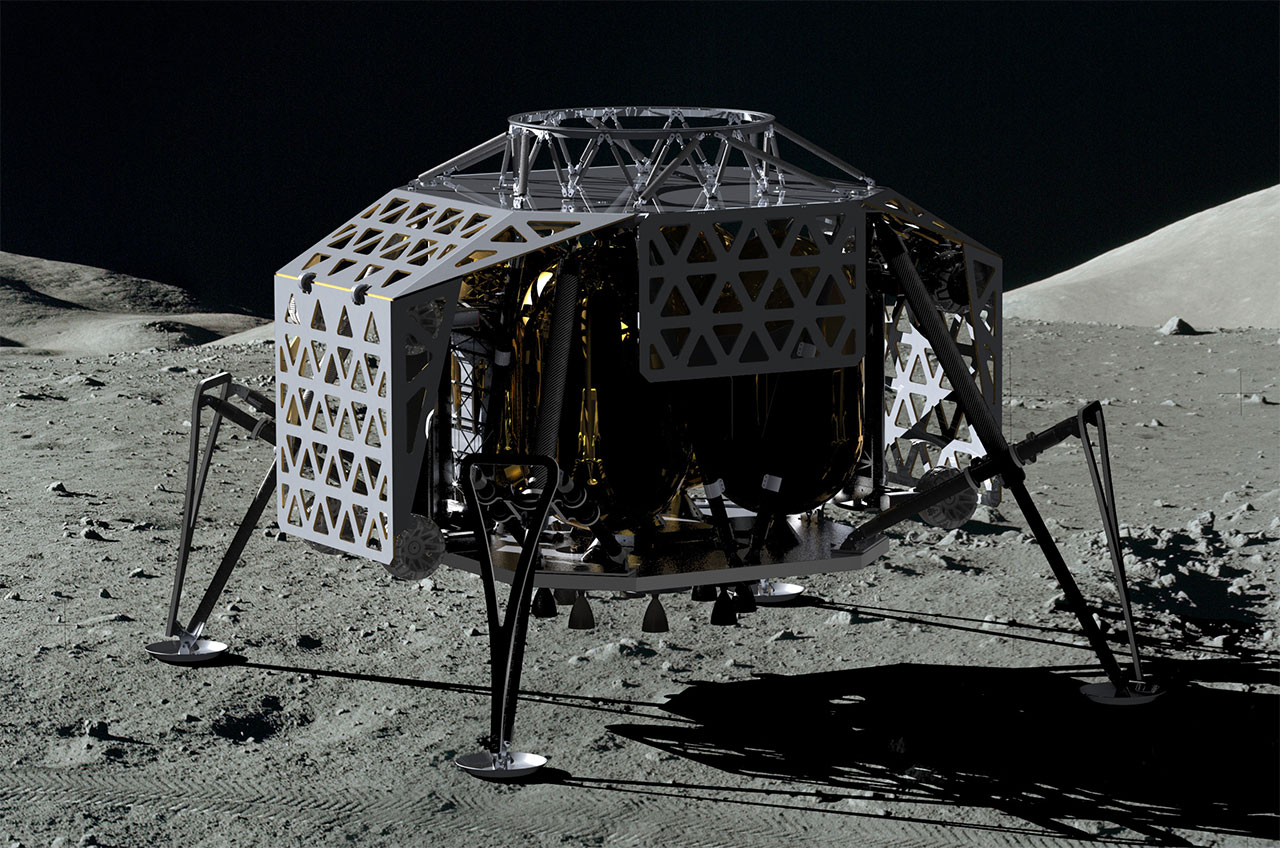The Moon Will Get Its Own Mobile Phone Network in 2019

Call it one giant leap for 4G. The moon is about to get its very own mobile phone network.
Vodafone Germany has teamed with Nokia to build the first 4G network on the moon. The network, which will be built in 2019, will support a private lunar rover mission by the Berlin-based team Part Time Scientists, known as PTScientists. The group was one of several teams that competed in the Google Lunar X Prize, a private race to the moon that will end in March with no winners.
But although the Google Lunar X Prize competition is over, PTScientists' "Mission to the Moon" is not. The group aims to launch a lander and two small rovers to the moon from Cape Canaveral, Florida on a SpaceX Falcon 9 rocket during the 50th-anniversary year of NASA's Apollo 11 moon landing.
The moon's 4G network, which Vodafone Germany announced Tuesday (Feb. 27), will support PTScientists' twin Audi Quattro rovers and their lander ALINA (short for Autonomous Landing and Navigation Module). PTScientists will use its rovers to study the lunar rover used by the Apollo 17 astronauts during their historic December 1972 mission to the moon's Taurus-Littrow Valley.
Vodafone picked Nokia to build a space-worthy version of its Ultra Compact Network, one that will be the lightest ever made, at just 2.2 lbs. (1 kilogram) — no heavier than a bag of sugar, Vodafone representatives said in a statement.
"This project involves a radically innovative approach to the development of mobile network infrastructure," Vodafone Germany CEO Hannes Ametsreiter said in the same statement. "It is also a great example of an independent, multi-skilled team achieving an objective of immense significance through their courage, pioneering spirit and inventiveness."
Under the plan, PTScientists' ALINA lander will use the 4G network to beam the first live HD video feed from the surface of the moon. The signal, which will operate in the 1,800-MHz frequency band, "will be broadcast to a global audience via a deep space link that interconnects with the PTScientists server in the Mission Control Centre in Berlin," according to the statement.
Get the Space.com Newsletter
Breaking space news, the latest updates on rocket launches, skywatching events and more!
"This important mission is supporting, among other things, the development of new space-grade technologies for future data networking, processing and storage, and will help advance the communications infrastructure required for academics, industry and educational institutions in conducting lunar research," Marcus Weldon, chief technology officer at Nokia and president of Bell Labs, said in the statement. "These aims have potentially wide-ranging implications for many stakeholders and humanity as a whole, and we look forward to working closely with Vodafone and the other partners in the coming months, prior to the launch in 2019."

In a statement, PTScientists CEO and founder Robert Böhme called the 4G network a "crucial first step for sustainable exploration of the solar system." By using a 4G network, PTScientists will be able to beam data from the Quattro rovers to the ALINA lander without depleting precious energy reserves or requiring the rovers to be stationary while transmitting data, the team explained in a mission description.
"With Mission to the Moon, we will establish and test the first elements of a dedicated communications network on the moon," Böhme said in the statement. "The great thing about this LTE solution is that it saves so much power, and the less energy we use sending data, the more we have to do science!"
Email Tariq Malik at tmalik@space.com or follow him @tariqjmalik and Google+. Follow us @Spacedotcom, Facebook and Google+. Original article on Space.com.
Join our Space Forums to keep talking space on the latest missions, night sky and more! And if you have a news tip, correction or comment, let us know at: community@space.com.

Tariq is the Editor-in-Chief of Space.com and joined the team in 2001, first as an intern and staff writer, and later as an editor. He covers human spaceflight, exploration and space science, as well as skywatching and entertainment. He became Space.com's Managing Editor in 2009 and Editor-in-Chief in 2019. Before joining Space.com, Tariq was a staff reporter for The Los Angeles Times covering education and city beats in La Habra, Fullerton and Huntington Beach. In October 2022, Tariq received the Harry Kolcum Award for excellence in space reporting from the National Space Club Florida Committee. He is also an Eagle Scout (yes, he has the Space Exploration merit badge) and went to Space Camp four times as a kid and a fifth time as an adult. He has journalism degrees from the University of Southern California and New York University. You can find Tariq at Space.com and as the co-host to the This Week In Space podcast with space historian Rod Pyle on the TWiT network. To see his latest project, you can follow Tariq on Twitter @tariqjmalik.









